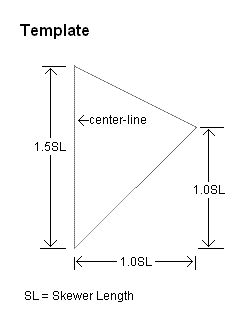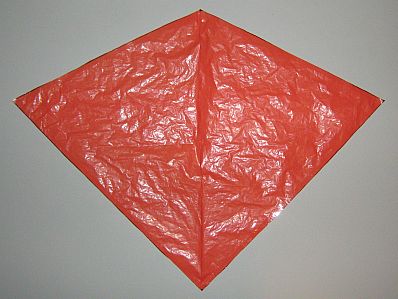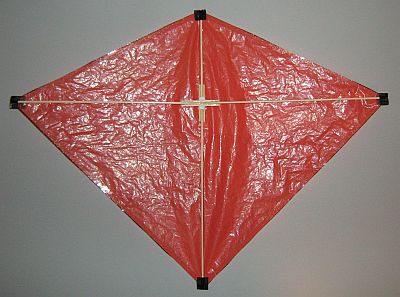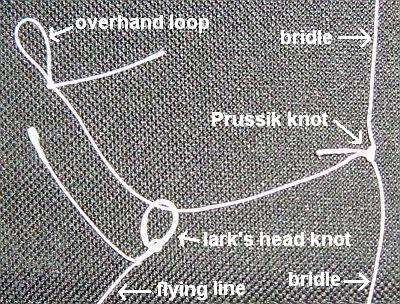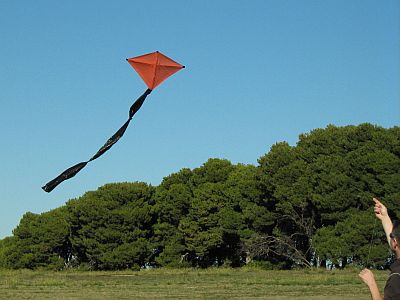
How To Build A Diamond KiteComplete Instructions For The MBK 2-Skewer Diamond KiteThis set of instructions on how to build a diamond kite assumes you know absolutely nothing about kite making. You might already have some of the simple tools and materials required. Anything you don't have is easily bought. If not exactly what I used, then at least something pretty similar! The instructions on how to make a diamond kite might look awfully long, but that's because they are so detailed. For those who like pictures, every detail is illustrated with photographs too. Just quickly work your way through, skimming over any detail that you don't need. All in all, it should be quite hard to make a mistake! The MBK 2-Skewer Diamond Kite is a medium-sized diamond 58 cm across and 44 cm tall, with a tail. Some 'dihedral' gives extra stability and shortens the amount of tail required. The 2-Skewer Diamond is a very nice light-to-moderate wind flier. Have you read the page on kite materials? If you haven't already, do it now to see what's needed for building a diamond kite. How To Build A Diamond Kite - Frame
For this diamond, you need to glue skewers together to form the 2 spars.
How To Build A Diamond Kite - Sail
The template shown above represents one side of the kite sail. You will now transfer these measurements to the sail plastic as follows...
Note: Did you find your ruler was not long enough to rule all the lines? Just mark a dot about mid-way between the 2 corner dots, using whatever straight edge you can find - maybe a piece of wood. Then, connect the 3 dots with your ruler. Problem solved, and no need to rush out and buy a 1 meter (1 yard) ruler!
Note: Don't worry about overlapping lengths of tape at the corners, it will all look tidier after the cutting is done.
How To Build A Diamond Kite Bridle
Now take a length of flying line about half a skewer long, and tie one end to the bridle line with a Prussik knot. Tie a small simple overhand loop into the other end, just to get a big knot. How To Build A Diamond Kite - Attaching The Tail
Have you read the page on making kite tails? Assuming you have...
See the photo, where I have left the tail a bit loose to make it clear. At this point, you've pretty much finished making the 2-skewer diamond! How To Build A Diamond Kite - Preparing To Fly
Finally, make up a flying line and attach it to the bridle with a Lark's Head knot. See the photo above. As a final check, suspend the kite from the flying line. Shift the Prussik knot along the bridle line until the kite hangs at about a 30 degree angle from the horizontal. How To Build A Diamond Kite - Flying!Assuming there is some breeze outside, just dangle the kite at arm's length until the wind catches it. As long as you feel the kite pulling, let out line slowly by letting it slip through your fingers. If it refuses to climb despite pulling on your hand, shift the Prussik knot towards the nose a bit, and try again. Keep going until the kite behaves itself! Another approach is to get a helper to hold the kite up and let it go, with maybe 10 or 20 meters of line let out. This way, the kite soon gets high enough to make it easy to let more line out.
Here's a picture of the MBK 2-Skewer Diamond Kite being launched, down at a local reserve. Have fun flying, and I hope you've enjoyed learning how to build a Diamond kite. All the above info, plus much more is available in a PDF eBook which covers the entire 2-skewer series of kites. Last updated: 13 Aug 2008 Return to How To Make A Kite from How To Build A Diamond Kite All the way back to Home Page |

